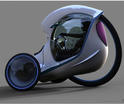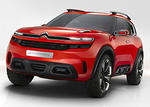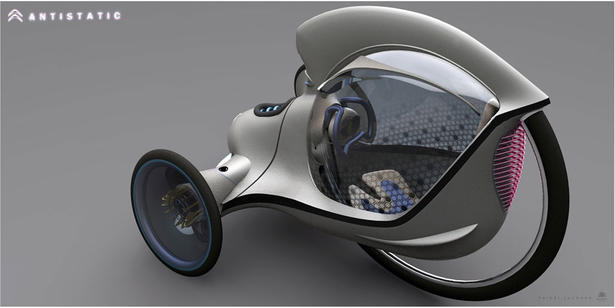
Citroen has released today the renderings of the new Citroen Antistatic Concept, or E-3POD, which was presented at the EV Design Challenge at the Royal College of Art. The Citroen Antistatic Concept was chosen by the representatives of the company's Style Center and Electric Vehicle Development Team as the best overall design entered in the competition. The Citroen Antistatic Concept was imagined by Heikki Juvonen, and was unveiled at the Royal College of Art's Interim Degree Show in London.
The main focus of the competition won by the Citroen Antistatic Concept was to design the esthetics of a future, ultra-compact electric vehicle for the French car manufacturer.
The Citroen Antistatic Concept is a single seater, three-wheel vehicle, designed for personal urban transport. One of the most interesting features of the Antistatic is the third wheel which features an innovative hub-less design. As the winner, Heikki Juvonen received a six month employment contract at the PSA Design Center in Paris.
Citroen Press Release:
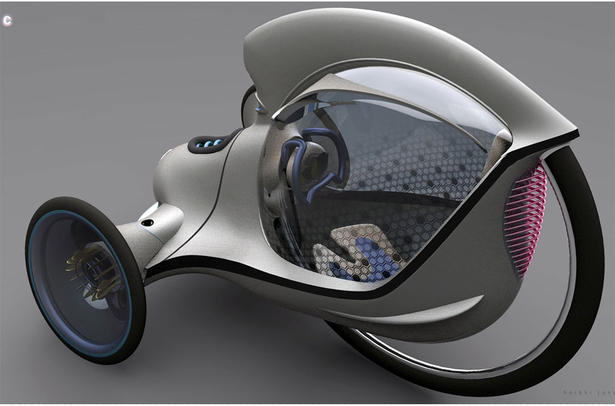
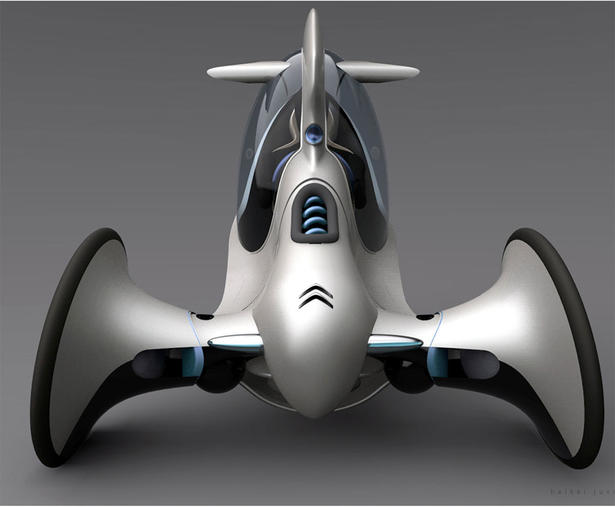
CITROEN SPONSORS EV DESIGN CHALLENGE AT THE ROYAL COLLEGE OF ART
A series of visionary designs in a Citroen sponsored project have been unveiled at the Royal College of Art’s Interim Degree Show in London. The Double Challenge project required RCA MA second year students to design a compelling ultra-compact model that could establish a unique Citroen e-vehicle aesthetic for the future. The project was jointly sponsored by Citroen and EXA, a France-based aerodynamic simulation software company.
Heikki Juvonen’s E-3POD Antistatic was chosen as the best overall design by representatives from Citroen’s Style Center and Electric Vehicle Development Team. His single-seat creation is a bold and engaging take on an urban three wheel electric vehicle. The distinctive, aerodynamic styling features two smaller wheels at the front with the driver sitting inside a larger third wheel with an innovative hub-less design. As his prize, Heikki receives a six month employment contract to work at the prestigious PSA Design Center in Paris.
Heikki commented; “I’m thrilled Citroen selected my design as their favourite and I can’t wait to work with their talented team in France. As a designer I strive for new and better solutions. Good and sustainable design not only improves manufacturer brand image and sales, but can also help to preserve our environment.”
Citroen had significant involvement throughout the Double Challenge project, providing industry figures to lend the students their expertise and experience, as well as organising a trip to the PSA Design Center and Le Conservatoire, Citroen’s in-house museum of historic models.
Philippe Holland, Responsable Style Graphique at Citroen, said; “We’re delighted to be involved in
this important RCA project. The students have produced some truly exceptional ideas for the future design of electric Citroen vehicles. This type of powertrain is increasingly recognised as an important solution for economically and environmentally viable urban transport; so it’s fantastic to see the electric visions of these potential car designers of tomorrow.”
The RCA is the only exclusively postgraduate art and design university. The college’s Automotive Design course has been in existence for 40 years and is the oldest of its kind in Europe.
Mark Lloyd, Chief Designer of the award-winning Citroen DS3, previously studied at the Royal College of Art.
Designed by RCA student Heikki Juvonen, the Citroen E-3POD Antistatic electric tripod is a new type of electric vehicle for urban commuting. The ultra-light, micro segment, single-seater is not meant to replace cars, but to be an addition to the family transportation fleet, positioned between bikes and cars. With the E-3POD, the user can enter the world of electric vehicles without having to sacrifice their main means of long distance travel in internal combustion engine cars. The distinctive look of the electric design language is applied to distinguish the product from being associated to cars, for the avoidance of comparison in terms of operational range or refuelling/recharging time. The E-3POD has a simplified, lightweight construction with an emphasis on aerodynamics to minimize the required battery size. This lowers the production costs, making the E-3POD affordable for purchase in addition to the family car - and a potential means of commuting for young people and students. The lowered weight is emphasized in design elements such as the rear wheel, which works as a supportive structural element, the shared suspension for both front wheels, and the use of scratch resistant plastic for the canopy. The silent electric engines also make sound insulation redundant, allowing for lighter material selection. The E-3POD provides the user with easy, cost efficient transport with access to easier parking due to the small footprint. The design also provides comfortable and isolated personal space, which - when compared to bicycles or public transport - is a welcome addition. The short length of the vehicle makes it agile in urban environments. At higher speeds the E-3POD tilts slightly to provide solid grip and an emphasised stance, giving cornering a more responsive feel.




